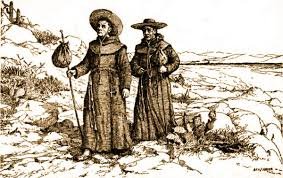The sport banned by European missionaries was traditional Hawaiian surfing. They viewed it as immoral.
European missionaries arrived in Hawaii during the early 19th century. They aimed to spread their religious beliefs and values. Surfing, a core part of Hawaiian culture, clashed with their strict moral codes. The missionaries saw surfing as frivolous and associated it with nudity, which they deemed improper.
This cultural clash led to the decline of surfing for many years. Understanding this historical context sheds light on the impact of European colonization. It highlights how missionaries’ actions affected indigenous traditions. This story is a reminder of the cultural conflicts that arise from differing worldviews. Join us as we explore the history and resurgence of surfing in Hawaii.
The Banned Sport
European missionaries banned surfing in Hawaii. They disapproved of its spiritual and cultural significance. This led to its decline for many years.
European missionaries traveled far and wide to spread their beliefs. In their journey, they encountered various cultures and practices. Some of these practices did not align with their values. One such practice was a sport that was eventually banned.
Identification Of The Sport
The sport that was banned by European missionaries is called “Ulama.” It was an ancient Mesoamerican ballgame. Ulama had deep cultural and religious significance. Played by the Aztecs and Mayans, it was more than just a game. It involved a rubber ball and a stone court. Players used their hips to hit the ball.
Reasons For The Ban
European missionaries had several reasons for banning Ulama. First, they saw the sport as a pagan ritual. The game often had religious ceremonies attached to it. Missionaries aimed to convert the indigenous people to Christianity. Second, the sport sometimes involved human sacrifices. This practice was against the missionaries’ beliefs. Third, the game was violent. Injuries and deaths were not uncommon. The missionaries viewed these aspects as barbaric. They believed banning the sport would help in their mission. They wanted to bring what they thought was civilization and order. Through the ban, they hoped to change the cultural practices of the people. “`

Credit: www.amazon.com
Cultural Significance
European missionaries saw many indigenous practices as obstacles to their goals. Among these practices, certain sports held deep cultural significance. These sports were often banned, altering the fabric of indigenous societies.
Role In Indigenous Society
Sports played a key role in indigenous communities. They were more than just games. They were a way to teach values and skills. They brought people together and strengthened social bonds. Sports were a part of daily life and special ceremonies. They often had spiritual meanings, linking the people to their ancestors and gods.
Traditional Practices
Traditional sports varied widely across different cultures. Many included rituals and symbolic acts. These practices were passed down through generations. They preserved history and traditions. Some games involved entire villages and lasted for days. They were not just physical contests but also mental and spiritual experiences. They celebrated identity and heritage.
Missionary Influence
The European missionaries had a significant impact on the cultures they encountered. They often aimed to spread their religious beliefs and practices. This influence extended to various aspects of local life, including sports. One such sport that faced the ire of missionaries was traditional Hawaiian surfing.
Religious Beliefs
Missionaries held strong Christian beliefs. They viewed many local customs as pagan or immoral. Surfing, with its spiritual and social significance, clashed with their religious values. Missionaries saw it as a distraction from worship and work. They believed it promoted idleness and sinful behavior.
Cultural Conflicts
Surfing was more than a sport for Hawaiians. It was a way of life and a cultural expression. Missionaries, unfamiliar with this, sought to change it. They imposed their own moral codes and discouraged surfing. This led to conflicts and misunderstandings between the two cultures. The suppression of surfing marked a significant cultural loss for the Hawaiian people.
Consequences Of The Ban
The banning of traditional sports by European missionaries had profound repercussions. This decision impacted indigenous communities in several ways. The consequences were felt deeply in social and cultural aspects of life.
Social Impact
The ban on traditional sports created a significant social impact. Communities that once gathered for these events lost a major social outlet. People no longer had regular opportunities to come together and celebrate their heritage.
These gatherings were not just about sport. They were also about community bonding. People met friends, resolved conflicts, and strengthened social ties. The absence of these events led to a sense of isolation and fragmented communities.
Cultural Loss
The cultural loss was immense. These sports were more than games. They were a way to pass down traditions, stories, and values. Each game had its own rituals and significance. With the ban, much of this rich heritage was lost.
Moreover, the skills and knowledge associated with these sports faded. Younger generations missed out on learning important aspects of their culture. This created a gap in cultural transmission, weakening the community’s identity.
The banning also affected languages. Many sports had unique terms and phrases. Without the sports, these words fell out of use. This further eroded the cultural fabric of the communities.
Modern Revival
European missionaries banned many traditional sports. These bans aimed to suppress local cultures. One such sport faced a severe ban but is now seeing a revival. Efforts to reclaim heritage and the sport’s current status are significant. Let’s delve into these aspects.
Efforts To Reclaim Heritage
Communities work tirelessly to bring back the banned sport. They organize events and workshops. These activities teach the younger generation about their heritage. Cultural festivals also help in this revival.
- Workshops for children
- Cultural festivals
- Community events
Schools play a crucial role. They include the sport in their curriculum. This ensures that the sport is not forgotten. Local governments support these efforts too.
Current Status Of The Sport
The sport is gaining popularity again. Many regions now celebrate it with pride. Local leagues and competitions are common. This renewed interest shows the community’s dedication.
| Region | Events |
|---|---|
| Region A | Annual Tournament |
| Region B | Monthly Workshops |
| Region C | Weekly Matches |
Television and social media help spread awareness. Documentaries and interviews highlight the sport’s history. This media presence attracts new fans and participants. The sport is on its way to regaining its former glory.

Credit: didyouknow.org
Comparative Analysis
European missionaries played a significant role in shaping cultures and societies. Their arrival often led to changes in local traditions and activities. One such change was the banning of certain sports. This section explores the comparative analysis of these bans.
Other Banned Activities
European missionaries did not only ban sports. They also targeted various cultural practices. For instance, certain dances and rituals faced restrictions. These activities were often seen as pagan or unchristian. Missionaries aimed to replace them with Christian practices.
Traditional medicine was another target. Missionaries promoted Western medicine. They considered local practices to be superstitious. This caused a decline in the use of traditional remedies.
Global Perspectives
Banning activities was not unique to Europe. Missionaries from other regions did the same. In Africa, many cultural practices faced bans. In Asia, traditional festivals were often targeted. This was part of a broader strategy to spread Christianity.
In some cases, these bans had long-lasting effects. Local cultures were deeply impacted. Traditional knowledge and practices faced erosion. Yet, some communities resisted. They found ways to preserve their heritage.
The global impact of missionary activities is complex. It involves both loss and adaptation. This comparative analysis highlights the far-reaching consequences of cultural bans.

Credit: www.fairobserver.com
Frequently Asked Questions
What Sport Was Banned By European Missionaries?
The sport banned by European missionaries was traditional Hawaiian surfing. They considered it immoral and discouraged its practice.
Why Did European Missionaries Ban Surfing?
European missionaries banned surfing because they saw it as immoral. They disapproved of the scant clothing and mixed-gender participation.
When Was Surfing Banned By Missionaries?
Surfing was banned by European missionaries in the 19th century. This ban lasted for several decades.
What Impact Did The Ban Have On Surfing?
The ban significantly reduced the practice of surfing. It led to a decline in the sport’s popularity and cultural significance.
Conclusion
European missionaries banned the sport for cultural reasons. This decision affected many communities deeply. The sport held significant cultural value. Its banning disrupted traditions and local identities. Understanding this history matters. It highlights the clash between different cultural values. Respecting diverse traditions is important.
It helps build a more inclusive world. Reflect on this history. Appreciate the rich traditions around us.



